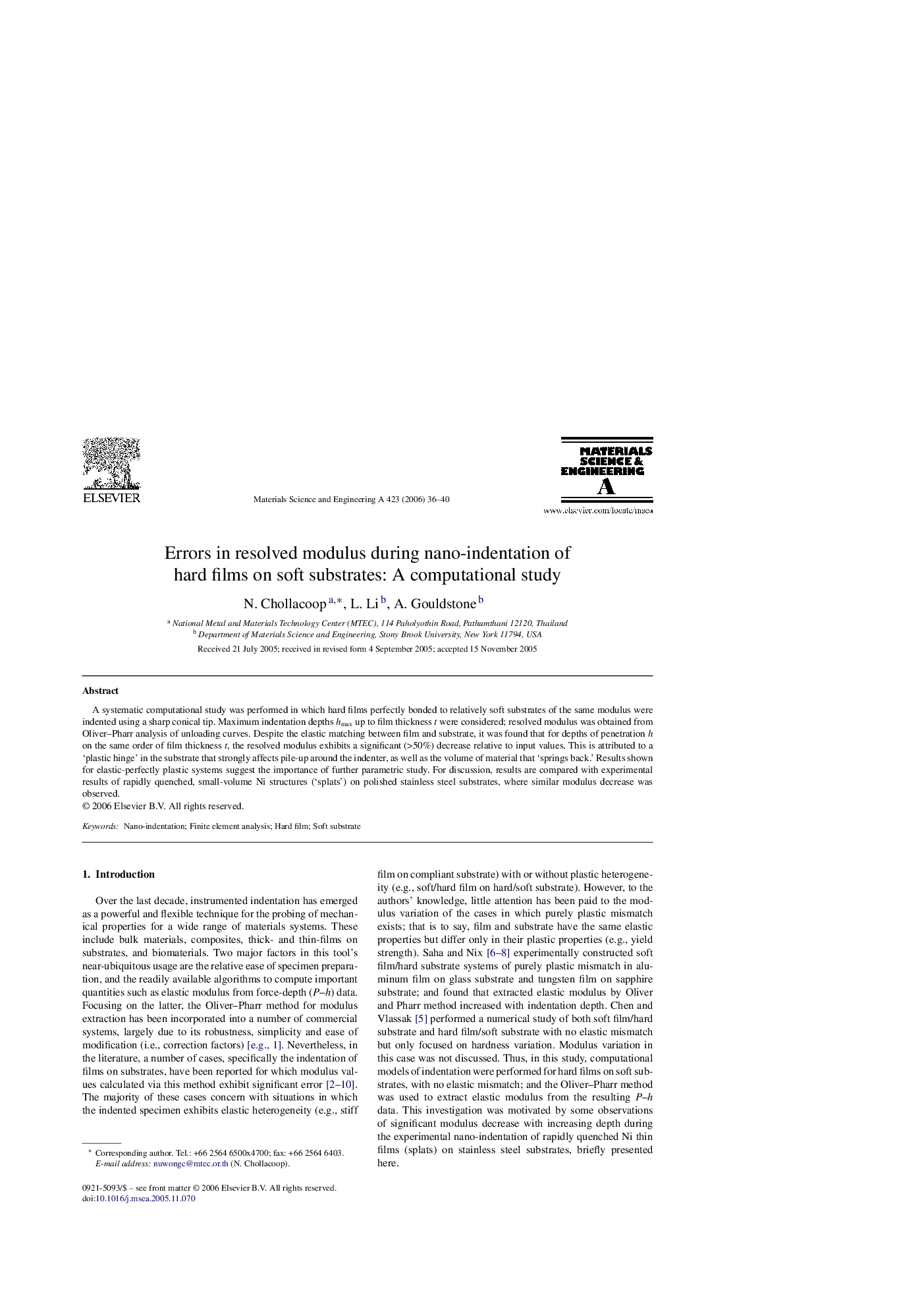| Article ID | Journal | Published Year | Pages | File Type |
|---|---|---|---|---|
| 1585636 | Materials Science and Engineering: A | 2006 | 5 Pages |
A systematic computational study was performed in which hard films perfectly bonded to relatively soft substrates of the same modulus were indented using a sharp conical tip. Maximum indentation depths hmax up to film thickness t were considered; resolved modulus was obtained from Oliver–Pharr analysis of unloading curves. Despite the elastic matching between film and substrate, it was found that for depths of penetration h on the same order of film thickness t, the resolved modulus exhibits a significant (>50%) decrease relative to input values. This is attributed to a ‘plastic hinge’ in the substrate that strongly affects pile-up around the indenter, as well as the volume of material that ‘springs back.’ Results shown for elastic-perfectly plastic systems suggest the importance of further parametric study. For discussion, results are compared with experimental results of rapidly quenched, small-volume Ni structures (‘splats’) on polished stainless steel substrates, where similar modulus decrease was observed.
